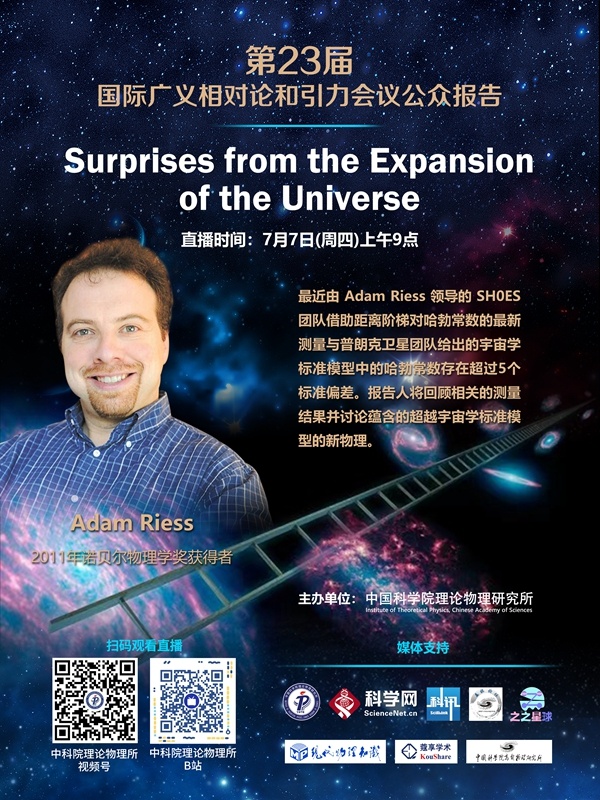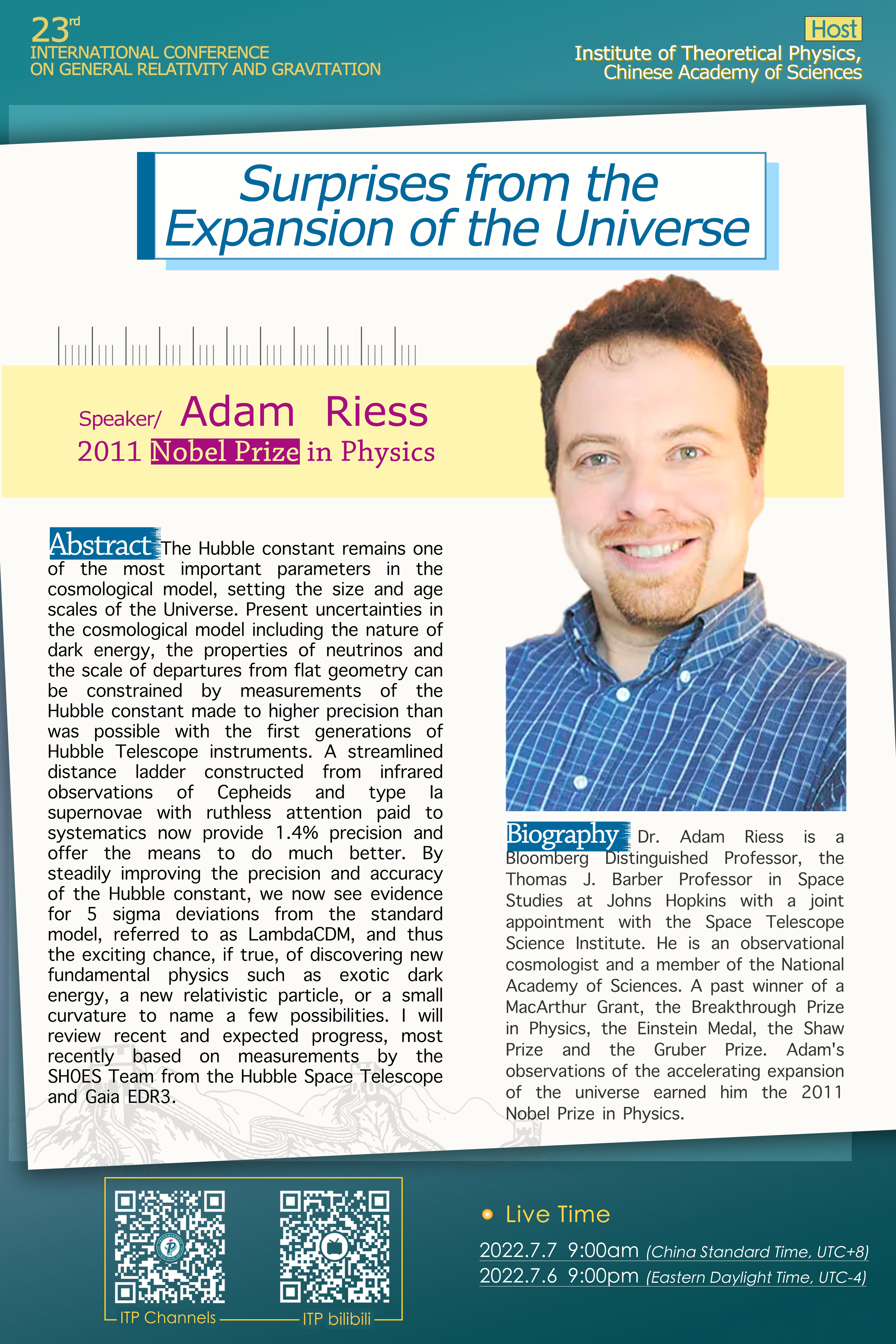

Zoom: https://us06web.zoom.us/j/2542092249?pwd=WFBibWtyaUVPYzMxTFNKbFNqajl6UT09
KouShare: https://www.koushare.com/lives/room/362837
Speaker:
Adam Riess (Johns Hopkins University)
Talk Title:
Surprises from the Expansion of the Universe
Abstract:
The Hubble constant remains one of the most important parameters in the cosmological model, setting the size and age scales of the Universe. Present uncertainties in the cosmological model including the nature of dark energy, the properties of neutrinos and the scale of departures from flat geometry can be constrained by measurements of the Hubble constant made to higher precision than was possible with the first generations of Hubble Telescope instruments. A streamlined distance ladder constructed from infrared observations of Cepheids and type Ia supernovae with ruthless attention paid to systematics now provide 1.4% precision and offer the means to do much better. By steadily improving the precision and accuracy of the Hubble constant, we now see evidence for 5 sigma deviations from the standard model, referred to as LambdaCDM, and thus the exciting chance, if true, of discovering new fundamental physics such as exotic dark energy, a new relativistic particle, or a small curvature to name a few possibilities. I will review recent and expected progress, most recently based on measurements by the SH0ES Team from the Hubble Space Telescope and Gaia EDR3.
Biography:
Adam Riess is a Bloomberg Distinguished Professor, the Thomas J. Barber Professor in Space Studies at the Krieger School of Arts and Sciences, a distinguished astronomer at the Space Telescope Science Institute and a member of the National Academy of Sciences.
He received his bachelor’s degree in physics from the Massachusetts Institute of Technology in 1992 and his PhD from Harvard University in 1996. His research involves measurements of the cosmological framework with supernovae (exploding stars) and Cepheids (pulsating stars). Currently, he leads the SHOES Team in efforts to improve the measurement of the Hubble Constant and the HIgher-z Team to find and measure the most distant type Ia supernovae known to probe the origin of cosmic acceleration.
In 2011, he was named a co-winner of the Nobel Prize in Physics and was awarded the Albert Einstein Medal for his leadership in the High-z Supernova Search Team’s discovery that the expansion rate of the universe is accelerating, a phenomenon widely attributed to a mysterious, unexplained "dark energy" filling the universe. The discovery was named by Science magazine in 1998 as "the Breakthrough Discovery of the Year."
His accomplishments have been recognized with a number of other awards, including a MacArthur Fellowship in 2008, the Gruber Foundation Cosmology Prize in 2007 (shared), and the Shaw Prize in Astronomy in 2006.